There are many ways to eat vegan and – guess what!? – they are not all healthy. If you are here for health (and so many of you are – impressive!), here is a simple way to figure out what to put on your plate as part of a healthy vegan diet plan.
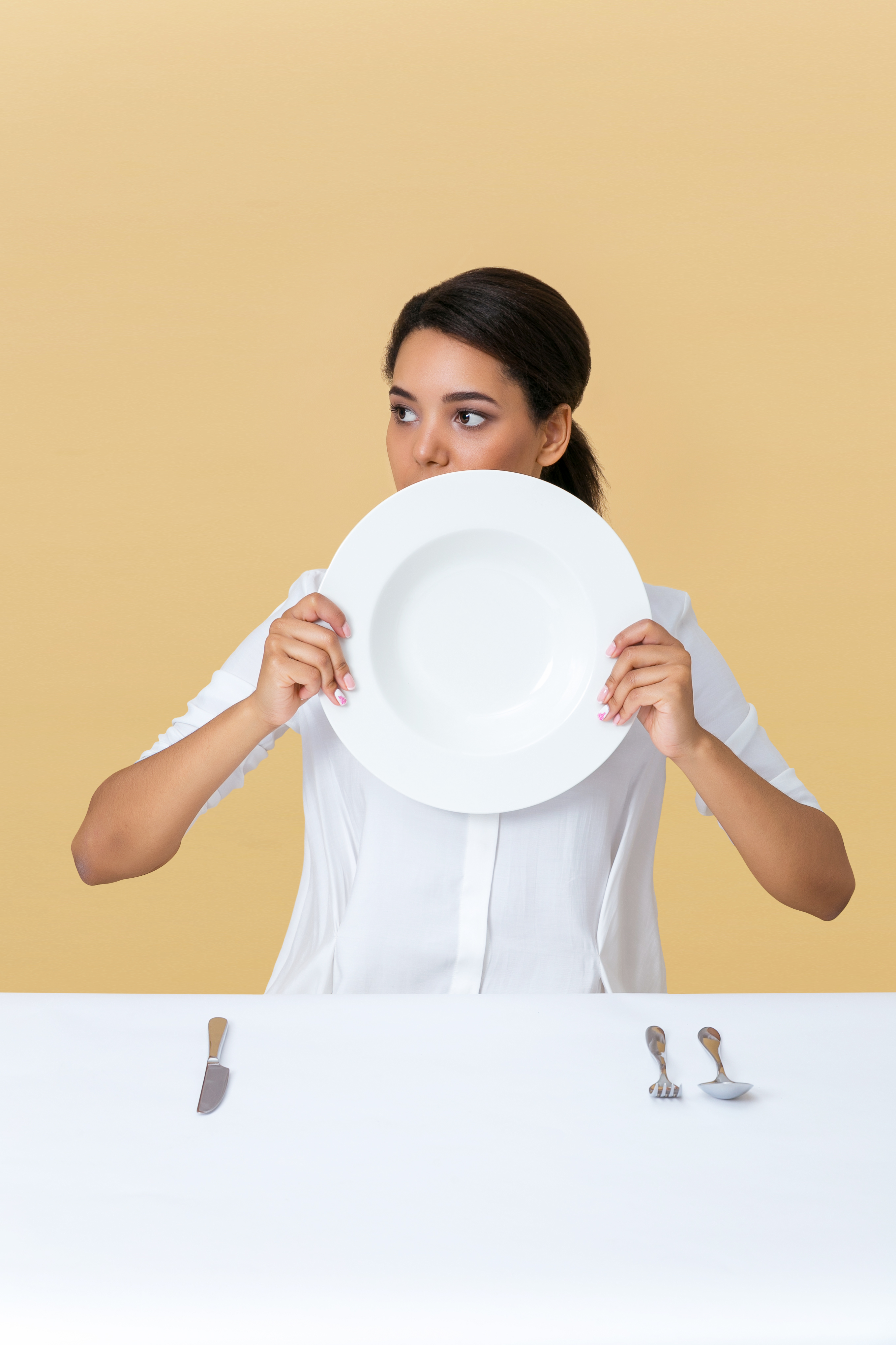
A Healthy Vegan Diet Plan
There are many interesting health effects of a healthful vegan diet. Two of the most impressive impacts of eating a healthy vegan diet is that it can reverse heart disease and type 2 diabetes. Incredible.
It can also be a great way to control weight gain, increase energy, prevent heart disease and type 2 diabetes, and prevent other illnesses such as, as some claim, certain cancers.
But… there are benefits to eating the right vegan diet, such as focusing more on whole foods rather than packaged vegan foods, bread, and crackers (which are super delicious) and getting lots of vegetables.
Often, vegans need to focus on adding in good foods rather than taking away foods. You may not be eating many packaged foods but you might also not be eating enough produce or beans either.
I have found some tricks to sticking with healthy eating but I also still struggle with eliminating certain foods.
The Daily Dozen: A Rough Diet Guide
The Daily Dozen guide of Dr. Greger can be a helpful framework to follow. If you’re like me and you don’t like too much restriction, you might find this is just the gentle guidance you need. This is an especially good vegan diet plan for beginners because… it isn’t a diet plan!
Dr. Greger heads up the site Nutrition Facts (or maybe they want you to actually call it “NutritionFacts dot org”, 1990s-style?) and developed this list based on his review of the available scientific literature on nutrition. There is a good deal of debate about nutrition science and there is not always tons of research, but this list is full of lots of agreed upon good foods.
Because the Daily Dozen is based on what Dr. Greger and his team have found to have positive health benefits, it also includes weird things like flaxseeds and turmeric. They also single out berries from other fruits because they have found them to have particularly positive health impacts. Same with cruciferous vegetables and greens from other vegetables – they really want to make sure you get those particular vegetables.
They also list exercise, beverages, and supplements as part of the Daily Dozen. I won’t go into those here.
This is what they say to include EVERY DAY in your diet:
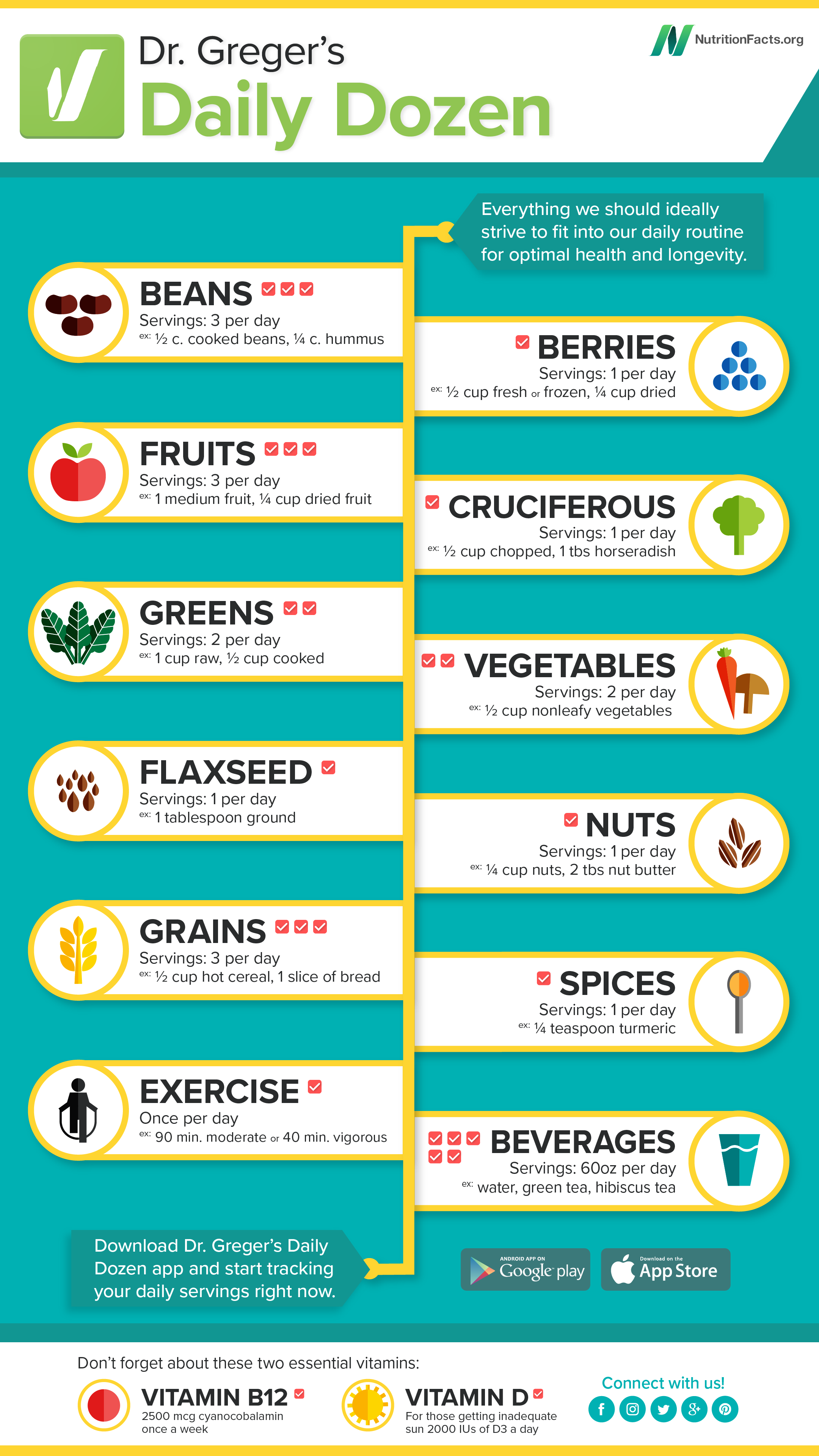
photo credit: NutritionFacts.org
Getting Started
There is an app that you can use to follow this Daily Dozen list (for iPhone and Android). You check off the boxes as you go (or when the reminder reminds you to do so).
Using this is a good way to get a sense of what it means to actually try to fit all of these foods into your daily diet. I probably filled this out every day for a few weeks. Now I don’t. Now I know that I need to add more leafy greens into my diet and more beans and fruits, too. More of all the good stuff!
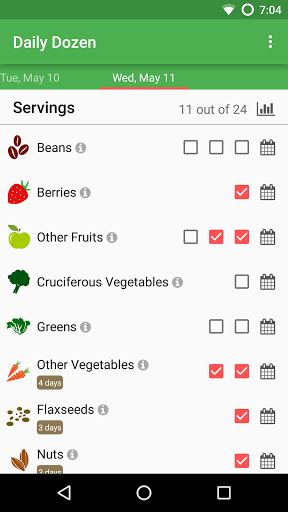
photo credit: NutritionFacts.org
Easy Wins
Going on an actual restrictive diet may work for some but such diets often fall by the wayside and are too precise. Try to be more flexible in your thinking about healthful eating and look for easy wins for your no-diet healthy vegan diet plan :).
Eating Your Beans
- Keep tons of canned beans on hand (you can get some organic for $.89/can at Aldi but also $.99/can at Amazon now that they own Whole Foods – on Prime Pantry – Also $.99/can at Trader Joe’s).
- Always have a bean dip in the fridge – homemade or store-bought.
- Make a mental check: does this meal have beans? If not, add them (even with pastas!). FYI, tofu counts but is kind of processed – try tempeh instead.
- Cook up a batch of lentils to add into things, like bowls or salads.
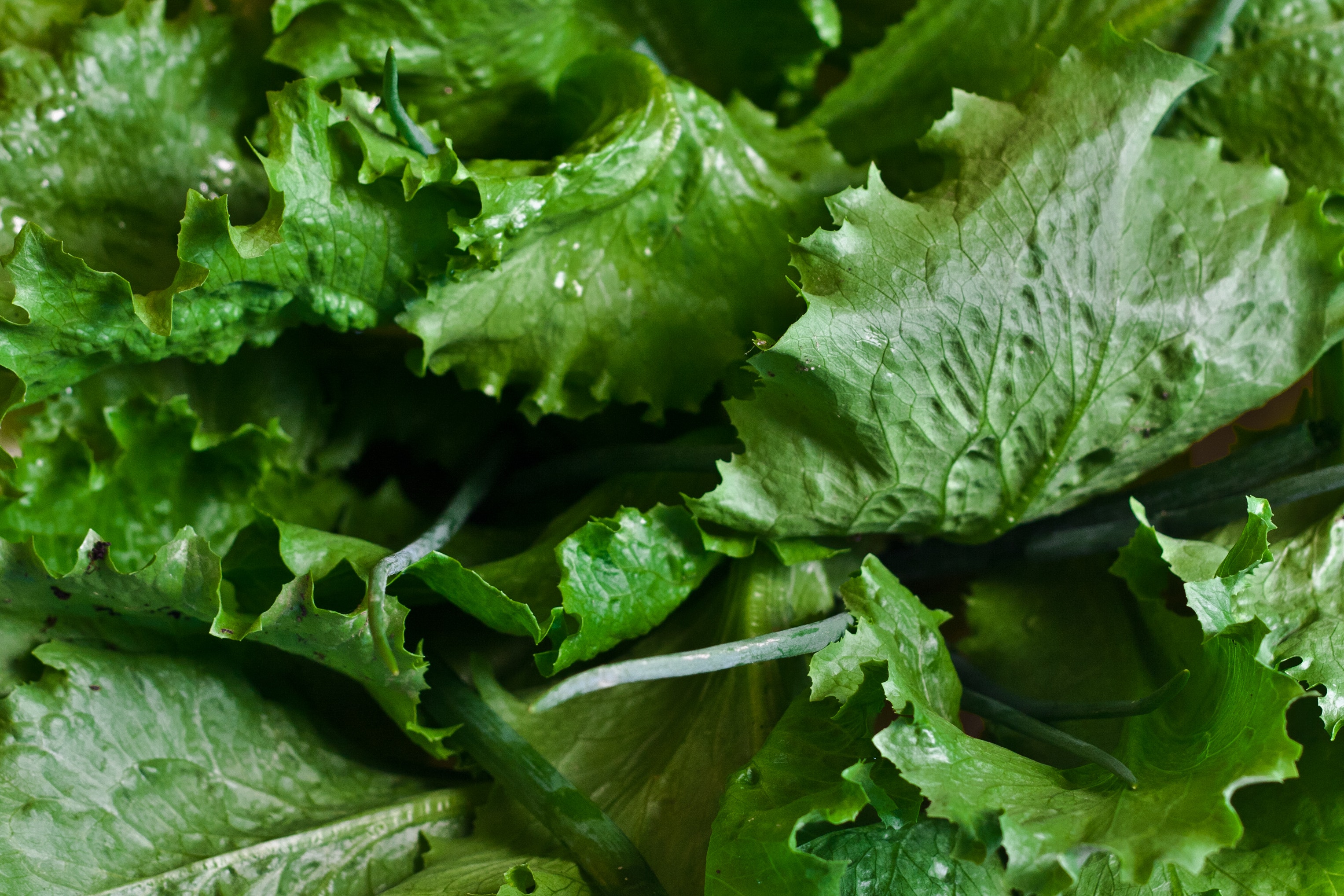
Getting In Your Veggies & Greens
- Keep greens as an “always” item on your shopping list – you always need spinach, kale, cauliflower, and cabbage (these are some good go-to’s).
- Prep vegetables for use at home immediately:
- wash all leafy greens
- dry them
- pack them in a ziplock or these reusable bags with a tea towel (or paper towel) to absorb moisture and stretch their life (I really like this for kale which requires washing)
- cut up veggies for dipping and store them in water
- wash carrots and celery (and peel carrots)
- cut up for dipping
- store in ball jars with water to keep crisp
- bust them out when you’re ready!
Subscribe for access to the
free Eating Vegan email course!

A No-Diet Healthy Vegan Diet Plan You Can Follow
Here’s how I strive to incorporate more of the Daily Dozen in my diet. I say more because I do not check off all the boxes in a day. This is my no-diet vegan diet menu plan, if you will!
Breakfast
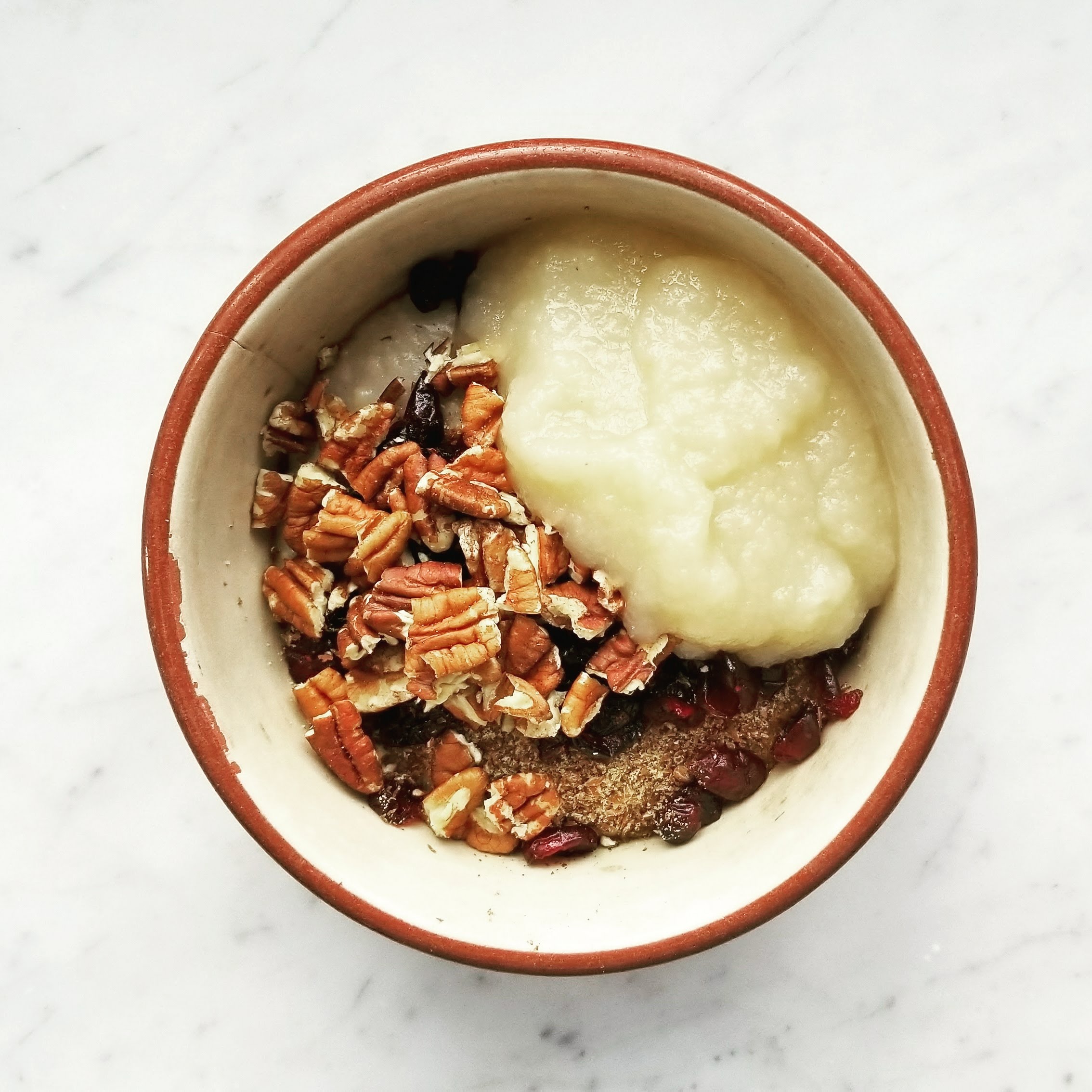
Steel Cut Oatmeal
- 1/3 cup quick-cook steel cut oatmeal cooked in 1 cup water with…
- 1/2 cup fresh berries or 1/4 c dried berries
- 1 T flaxseed
- 1/4 tsp turmeric
- lots of cinnamon
- some vanilla extract
- two big spoonfuls of applesauce (to use in place of sugar)
- 1/4 c walnuts (sometimes pecans or almonds if I’m just sick of walnuts)
- unsweetened almond milk (I’ve been getting vanilla recently), to taste
Most days, my breakfast is the same: quick-cook steel cut oatmeal. A good way to go here is to make up a bunch of overnight oats for the week that you can grab-and-go (just mix the above up with 1 cup or so of milk instead of water). If you don’t want to do that, the quick-cook steel cut oats are the way to go because they’re ready in 7 minutes or less.
Note: all quick-cook steel cut oats are NOT created equal! Whole Foods’ and Walmart’s are no good, in my opinion – they’re too mushy. Go with Bob’s Red Mill or the classic McCann’s if you want the good stuff.
I have been hearing how flaxseed is great for you for a long time now and I always have it on hand to make vegan eggs for baking, so… I eat it! It doesn’t add any flavor to your oats – it’s just a fiber and omega-3 boost.
Turmeric I added into my diet when I started to worry about a family history of arthritis – it is supposed to have good anti-inflammatory properties that can help with symptoms. Many people take it for its supposed cancer-fighting properties.
Servings checked:
Lunch
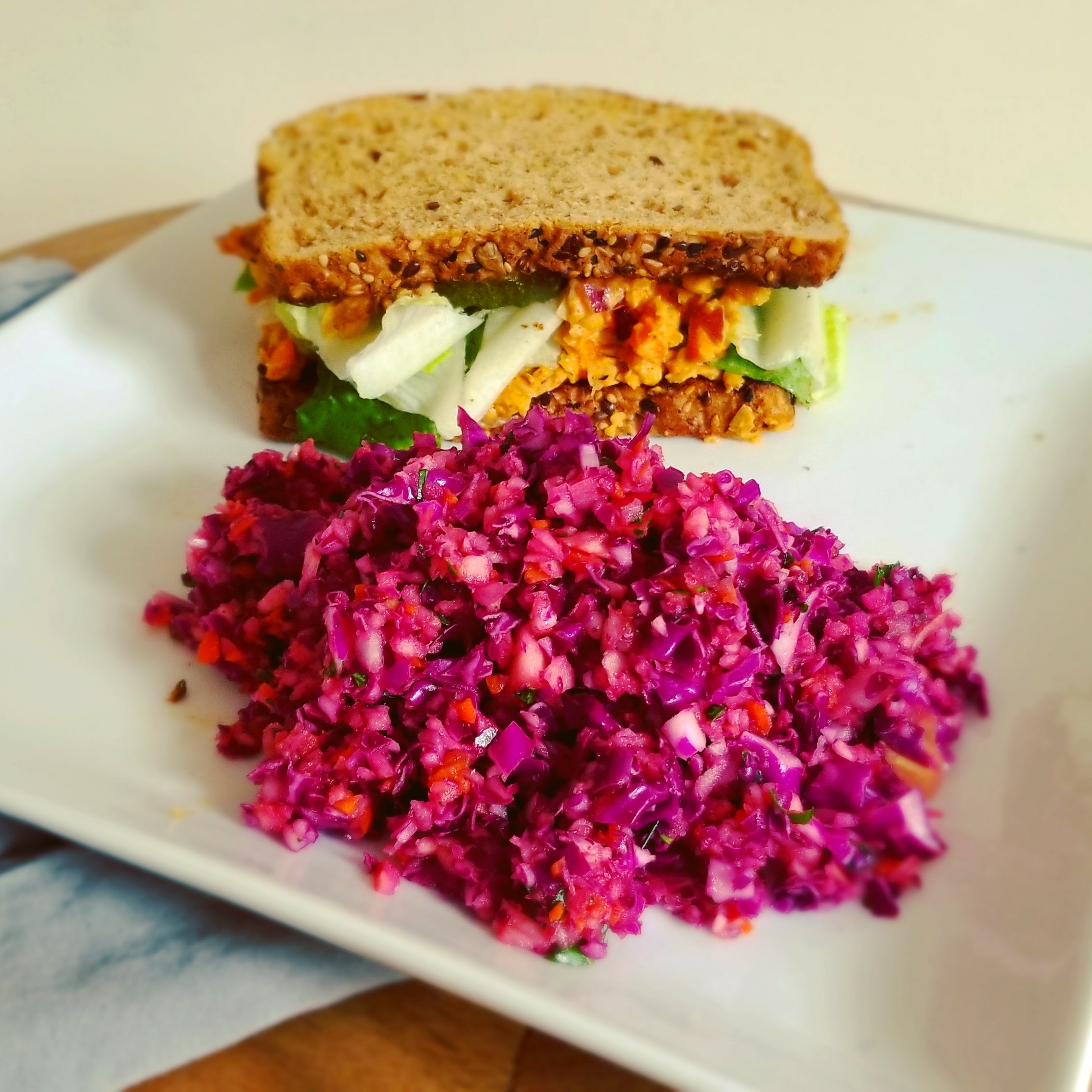
Sandwich
- whole grain bread, low in added sugar (I prefer Dave’s Killer Bread)
- chickpea salad (with celery or carrot mixed in) or baked tofu/tempeh
- tofu-based or cashew-based mayo or hummus spread
- spinach or romaine
Here are 5 Sandwich Recipes that you can use – they won’t cover all your Daily Dozen but they are a good resource.
Side: something cruciferous
- Sauerkraut
- Vegan Crack Slaw
- Red Cabbage Salad
Most days, if I’m not having leftover dinner, my lunch is a salad or sandwich with greens and beans, and a side of cruciferous (if I’m really good).
I haven’t researched why Greger loves cruciferous veggies for health so I’m very blind sheep here with my eating of cruciferous veggies, fyi ;).
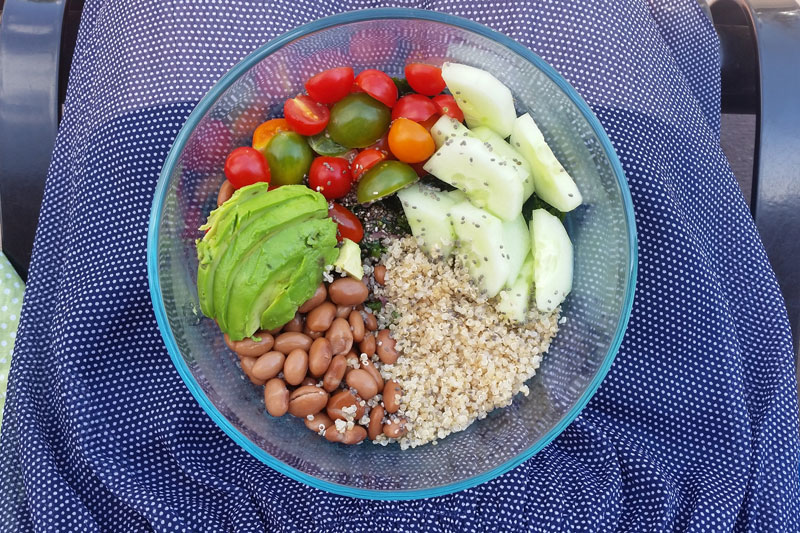
Salad
- Green: romaine, spinach, mixed greens, massaged kale or a mix of some of these
- Bean: black beans, chickpeas, kidney beans, lupini, etc.
- Other veggies/fruit: tomatoes, avocado, hearts of palm, carrots, cucumber, etc.
- Dressing: vegan goddess dressing – homemade or store-bought, balsamic vinegar, lemon juice, etc.
- optional: grains like quinoa, brown rice, side of bread or even some crunchy chips or croutons on top
- optional: you can top with flaxseed, hemp hearts, chia seeds, nuts, etc.
This is a simple Mix & Match Go-To Salad recipe you can use.
Side: something cruciferous
- Sauerkraut
- Vegan Crack Slaw
- Red Cabbage Salad
- If you used kale in your salad, that’s cruciferous!
You obviously have more options than just these but this is a good place to start.
Servings checked:
Snacks
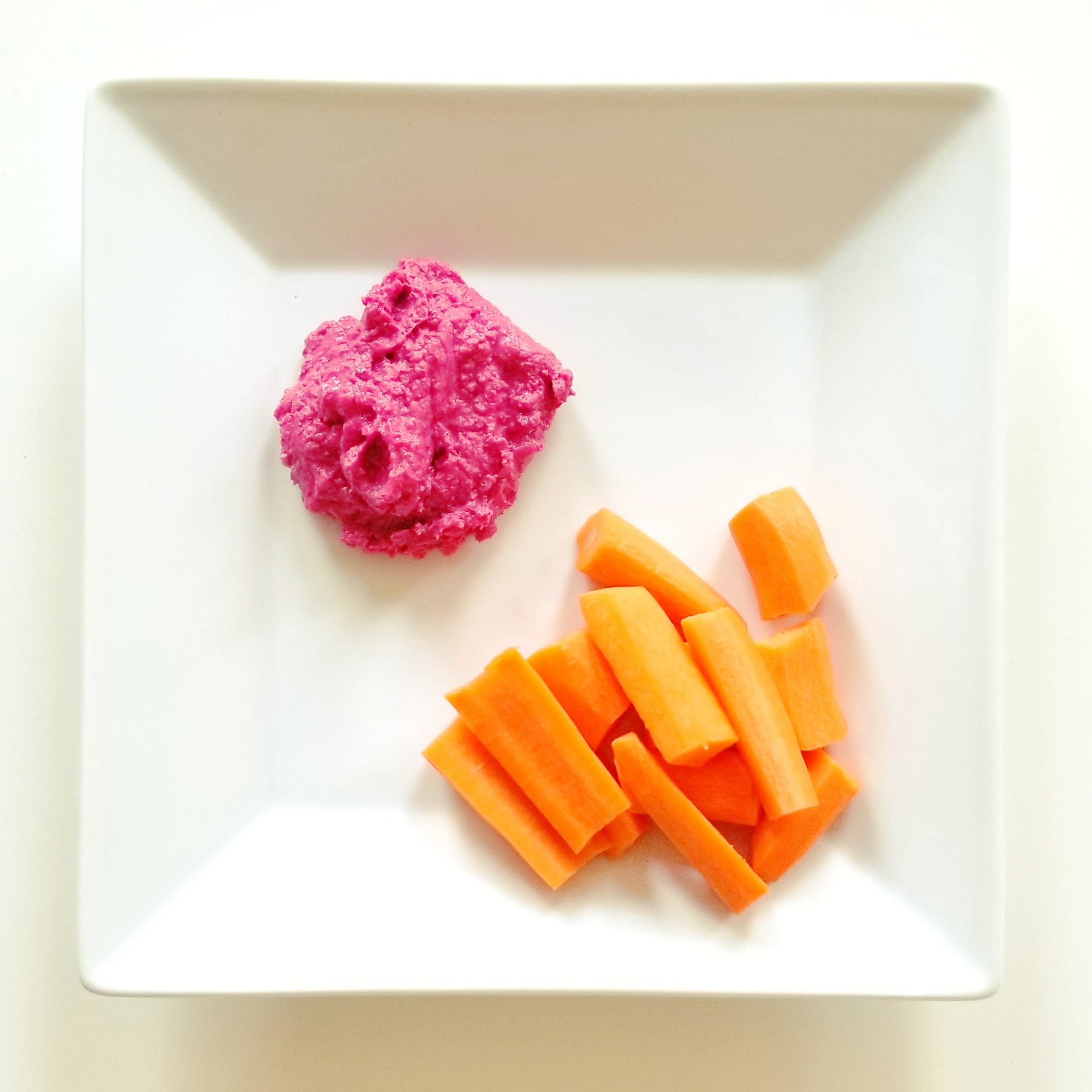
Veggies & Bean Dip
- cut up carrots, celery, or crackers if you don’t have any veggies on hand (store cut up vegetables in water to keep them crisp)
- hummus or other bean dip, store-bought or homemade
Making sure you snack on vegetables and bean dip is a great way to ensure healthy eating throughout your day. Otherwise, I’m reaching for crackers and peanut butter. That is a fine snack but we’re told to go easy on the nuts by Dr. Greger – just 2 T nut butter or 1/4 cup nuts.
Make sure to cut up (and peel) a bunch of carrots and/or celery in one go so that you have them ready for snacking. Store them in water to keep them crisp.
If you don’t have any vegetables for dipping, try eating better packaged stuff. I eat these Wasa crackers. Yup, I’m the worst since these are what people call “cardboard”. But they have super simple ingredients and crackers are just a means to convey the dips anyway, right?!
For bean dips, make up a hummus, black bean, kidney bean or any other bean dip you like. You can find oil-free recipes and there are even oil-free dips in the store.

Cruciferous “Slaw” (hot or cold)
There are two slaws that I love to make up for the week. One is hot (so can be reheated) and one is fresh and full of fruit too.
It’s true, vegan snacking can seem a little weird. Especially if you are focusing on healthful snacks. But, your energy levels will thank you even if you are getting the side eye from your coworkers!
Servings checked:
Dinner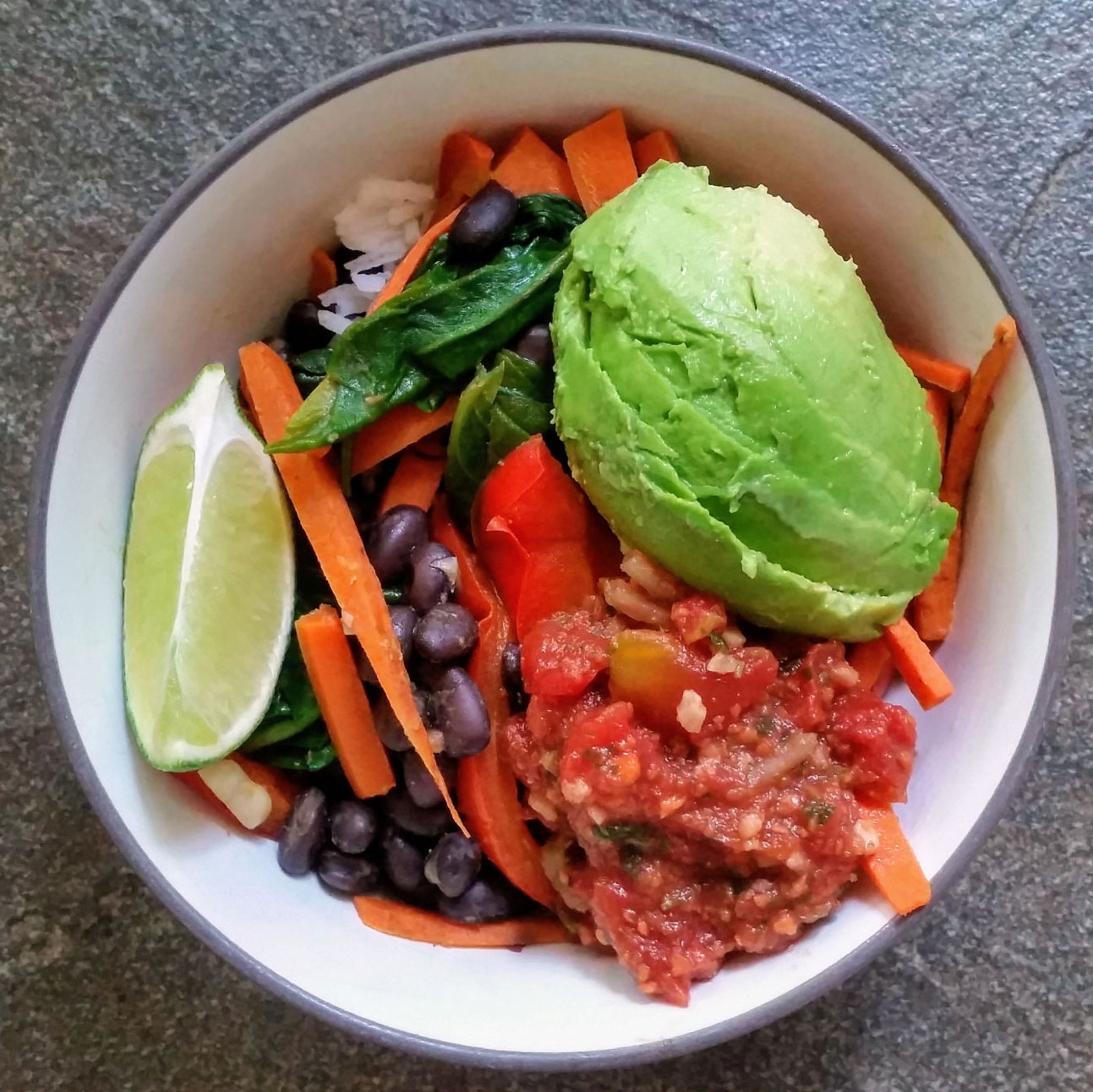
Is that WHITE rice in this bowl? For shame! Stick with brown.
Daily Dozen Bowl

Is that WHITE rice in this bowl? For shame! Stick with brown.
Use dinner to make sure you’re checking off all of the good things you are trying to eat in a day. Combine these together with some spices and hot sauce or use one of the recipes below:
- Beans: black beans, pinto beans, chickpeas, refried beans, lentils, split peas, tofu, tempeh, etc.
- Cruciferous: broccoli, cauliflower (cauliflower rice works here), brussels sprouts, cabbage, collard greens, kale, etc.
- Greens: spinach, romaine, kale, chard, etc.
- Vegetables: sweet potatoes, peppers, carrots, corn, mushrooms, garlic, onions, peas, tomatoes, zucchini, etc.
- Grains: quinoa, brown rice, farro, barley, millet, brown rice pasta, etc.
Try out recipes you like or if you are exhausted from your day or short on time, dinner is also a good time to make up a no-recipe recipe of rice and beans or a no-recipe recipe bowl (can you tell I like flexibility?!).
Dinner is where I tend to mix it up and experiment with new foods so often no two dinners look alike for me (that’s a lie but they are definitely more diverse than lunch or breakfast!). I try to just add in beans and greens like with lunch, and veggies, of course.
Servings checked:
Dessert
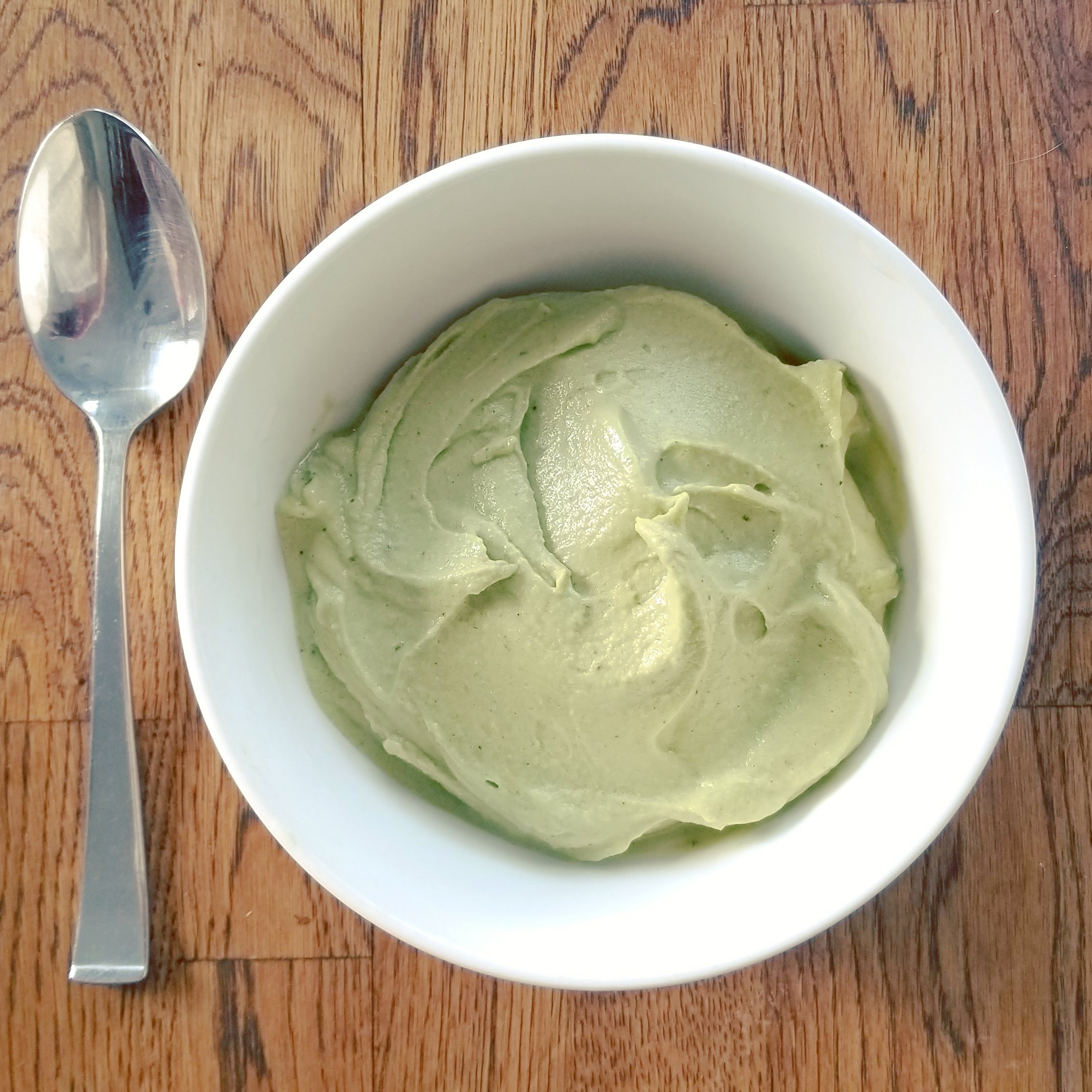
Nice Cream
- frozen bananas (slice up very ripe bananas and put in a freezer ziplock bag or ball jar)
- cocoa powder (optional)
- vanilla extract (optional)
- matcha powder (optional)
- vegan milk, as needed
Nice cream is a silly name we gave a wonderful dessert made only of frozen bananas. Freeze bananas, purée them in a food processor and, voilà!, you have something that resembles ice cream!
Place the bananas in a food processor or high-speed blender and purée until a smooth, ice cream begins to form. Give it a bit, a few minutes – it’s a magical thing that happens!
Dessert is where you can really get your fruit checkmarks on the board.
I let tons of bananas over-ripen so I always have frozen bananas for nice cream. I buy frozen fruit when it’s on sale so I can make up smoothies (or mango banana nice cream!).
Dates are nature’s candy, as they say. If you have a real sweet tooth, you’re going to want to treat yourself to dates instead of cookies and chocolate. You can add some almond butter to them for a really delicious treat!
Keep raisins and other dried fruit on hand so you can munch on that after a meal if you just need something sweet.
Servings checked:
Keeping On Track
![]()
Record What You Eat
You may consider tracking what you eat, at least for a few weeks. Record what you eat, but only one time (and if you liked it, it was relatively healthy, etc.) – don’t note if you eat oatmeal every day because that would be redundant. Instead, note new meals and recipes so that you always have ideas for what to make up when you’re feeling brain-dead.
I created a Google Spreadsheet and called it “What I actually eat” and it’s super helpful to gain awareness about my eating habits. I don’t get into the nitty gritty in terms of tracking calories or noting if I had a bunch of cookies or something to shame myself. I use it to remind myself of good, healthful meals, snacks, and desserts to make up so that I always have an idea for what to eat.
The spreadsheet has different tabs for different meals, snacks, and desserts. I link to recipes I’ve used and note any things I altered or what I would do differently in the future.
Reflect
Put a reminder on your calendar to periodically check in with yourself.
- Review each of the Daily Dozen – are you getting them in?
- What is preventing you from covering your bases?
- What ARE you eating? Write down some example days of meals that you typically go to.
Regroup
This is where you troubleshoot.
- Do you need to buy more prepared or packaged foods to eat healthier (such as cooked canned beans or packaged hummus)?
- Can you meal plan to get on track again?
- Do you need to use the app again? Set a push notification reminder to fill out the checkboxes.
- Do you need more recipes? Pick up some cookbooks.
Foods You May Want to Cut
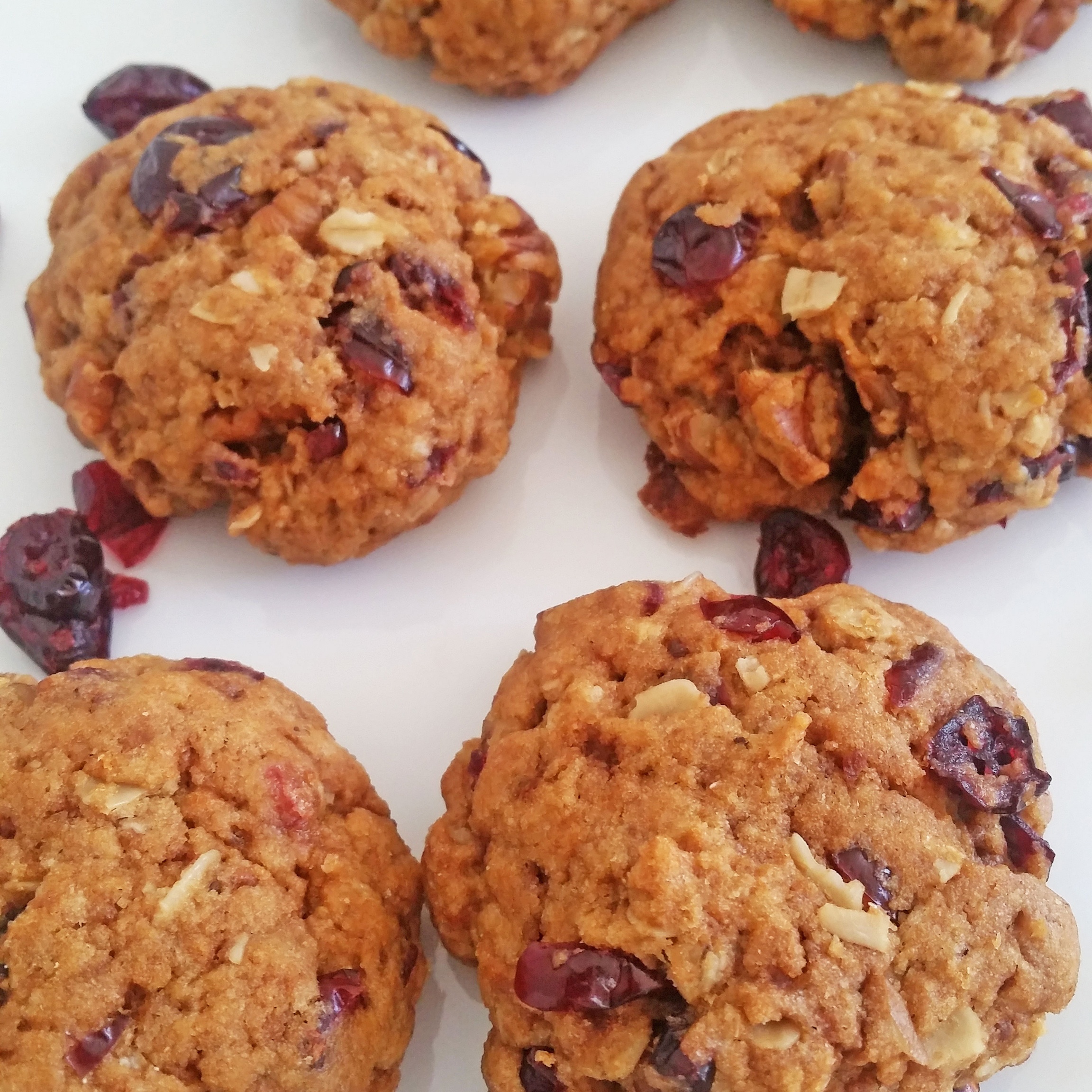
Doctors focused on the health benefits of a vegan diet will also tell you that your vegan meal plan should cut out added oil, salt, and sugar.
Let me tell you – this is hard!
I have made some attempts to do this but have not succeeded in any great way. Here are some ways I have made steps towards reducing these banned items and ways I haven’t. Might be helpful for you too!
Sugar
Instead of cookies, candies, and chocolate try:
- Fruits for dessert (nice cream!)
- Applesauce as a sweetener (like in oatmeal)
- Dates as candy
I have reduced added sugar in the morning but using loads of applesauce in place of agave or maple syrup. I keep medjool dates on hand and am being really good at having those satisfy my sweet tooth. You just need a few. Grapes are also a very sweet, “dessert” fruit.
But man I love me some baked goods and chocolate. And I do drink alcohol. I’m honestly not sure I’m going to give these up. I think I’ll just try to reduce when I’m getting out of control. You do what you can and want to do here!
Oil
You won’t realize how much you rely on oil until you try to cut it out. Here are some places to try to reduce oil consumption:
- Use veggie broth instead of oil to sauté
- Make or buy no or low-oil salad dressings
- Make or buy no-oil soups
Oil reduction is another one I’ve tried but am not doing great at. Sautéing with veggie broth is doable but not as delicious as with oil (IMO).
But there are places you can avoid oil with success, like with salad dressings (goddess and tahini) and soups. My friend just mentioned making a lentil soup and skipping sautéing some of the veggies beforehand in oil – easy.
Cutting out oil is especially pertinent if you have a heart condition. Treatments for advanced heart disease includes loads of leafy greens and no added oil or salt. I am focusing on the greens and not cutting out oil completely.
Salt
Oh my goodness, salt adds some delicious flavor, huh? Ok, but if we’re trying to reduce here are some things to try:
- Focus on other spices for flavor
- Use balsamic vinegar and mustard for flavor
- Spritz bowls and salads with lemon/lime
I am really not great with this one. I go in waves and use these toppings with varying degrees of success.
Making A Healthy Vegan Diet Plan Work For You
So, that’s the deal.
If you struggle with advanced heart disease or diabetes, it is worth it to be more strict than I am with regard to added oil and salt. But, if you are having a hard time despite your best efforts, be sure to eat TONS of leafy greens.
This approach might be a good one for you instead of following lots of vegan weight loss recipes because it is doable and not restrictive.
Good luck!
How do you stick with a healthy vegan diet plan? What good foods do you focus on? What do you cut out? Share below and tag @plentyvegan on Instagram to connect!
*This post contains affiliate links. In the case that you would purchase something using the link, I receive a small commission from affiliate partners which helps support my work here.
Subscribe for access to the
free Eating Vegan email course!

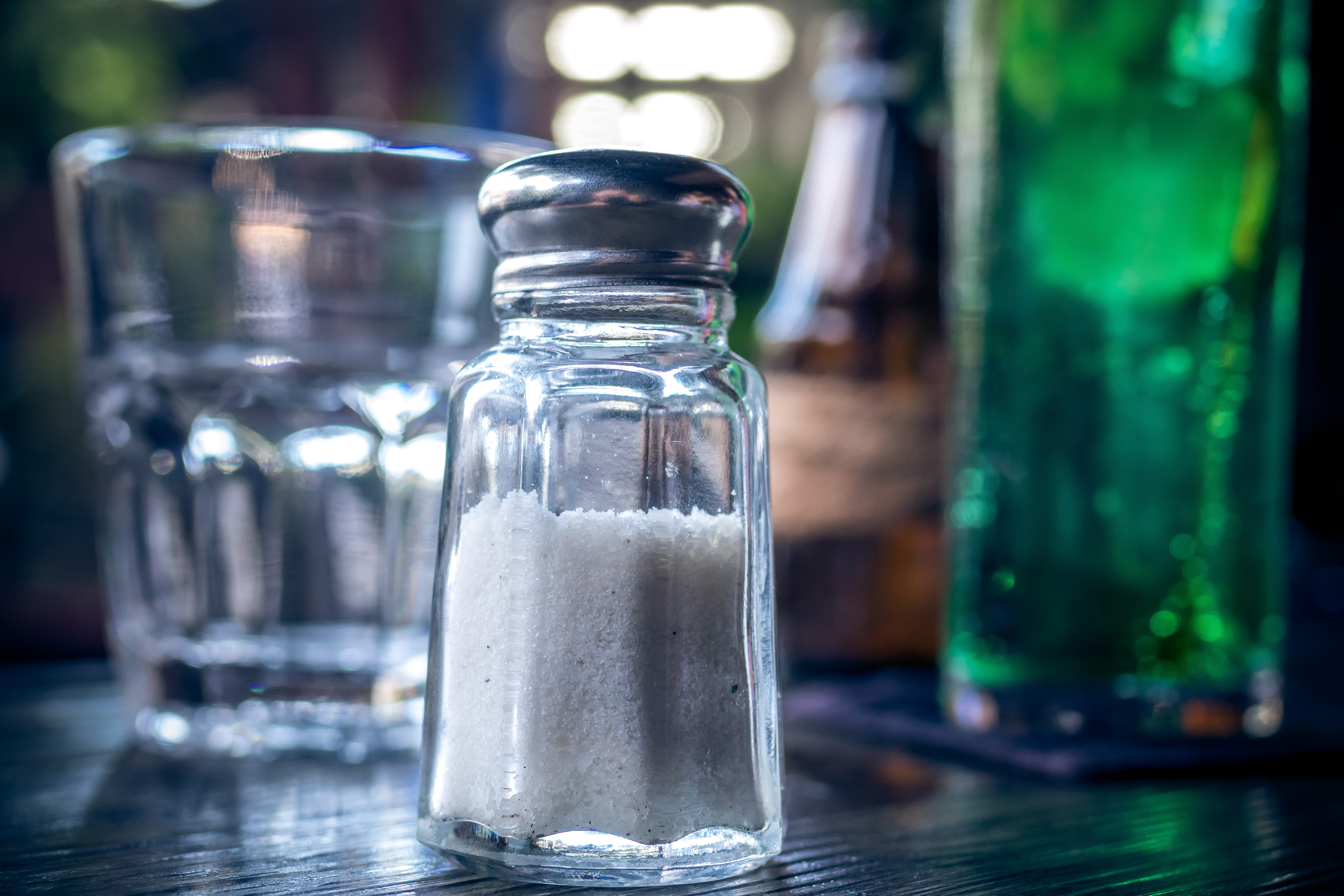

Leave a Reply